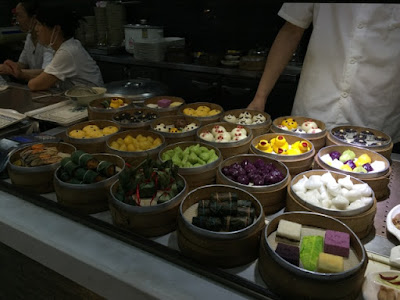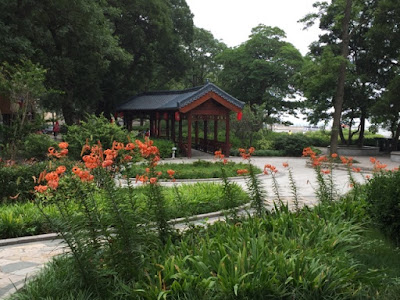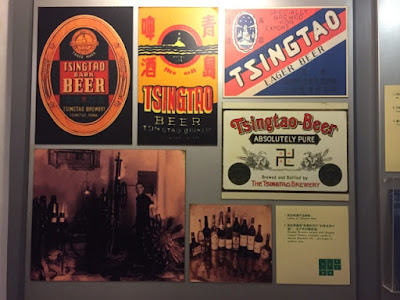I really wish I wasn't in such a bad mood while writing this, since I really loved Nanjing and wanted to devote a long post to all of the great things about Nanjing. Right now I am on the train to Suzhou; there was a mix up with my ticket, so I ended up having to switch, and now have a standing ticket, after having spent about two hours in the train station. The train station is actually pretty fun so that isn't necessarily so bad, but now on the train there is a super noisy family. I think everyone knows that crying children are really disturbing, but parents don't seem to realize that squealing and laughing children are also really disturbing. High pitched squeals of joy, which is great for parents since they like seeing their kids happy, are still annoying for fellow passengers who are tired and just want a bit of silence, or lower volume surrounding noise. I managed to find a seat, but who knows when I will be ejected from it, since presumably someone is coming, since I was told there were no seats left when I changed tickets.
I am feeling a bit better now though, since I've finally sat down and had a chance to relax a bit.
Nanjing is such a beautiful city, by far, and without contest, my favorite city in China thus far--I've probably said that already. I've had a lot of beautiful moment in Nanjing, walking around the river, seeing the lanterns lit up along the water. Two days ago, after leaving the Nanjing Memorial, I went to the Nanjing Museum and made a random new friend. I'm always excited to meet new people, but then when I realize that comes with restrictions I am less excited. We went to the museum together, which was nice but not spectacular. Then, we had to wait for her friend, who was late. We waited an hour and a half (this is what I mean by restrictions). Then we went back to my area, for food, when I made the excuse that I was tired and was going home to sleep, when I really just wanted to shop around and eat wherever without having to have a democratic discussion with two other people. I went to a restaurant and wanted to order cold cucumbers with garlic. "Just write your order down," said the waitress.
"I can't read or write," I said.
"Oh...but...you look so educated."
I explained again that I was American (I guess she thought I was a country girl or something who never went to school), and she was really sweet and walked around with me and helped me write down what I wanted to order.
The next day (yesterday), I went to a Buddhist Temple, Jiming Temple, which has an access point to the old city walls that used to surround and defend Nanjing. This was truly magnificent. The Temple itself was very pretty--this has been quite a pious trip so far, since I have visited and said prayers at temples in every city. When I walked in, they have me three thick, yellow incense. I wish I knew what the various gods were, but since I can't read, I just prayed at the ones that most resembled the buddha that I know, and paid respects at the other ones. At the top, there is an area where the incense are to be burned. Here, the smoke was so thick that as I walked up, I coughed and had to close my eyes because they stung. This temple is the most popularly used in the city supposedly, so even though it was 8:00 am, there were still many people. It was cute to see a little girl, maybe 3 years old, praying with her mother. She watched as her mother held the incense and bowed, and she tried her best to imitate, legs standing apart, bowing deeply.
I walked towards the back, where you buy a separate ticket to walk along the old city walls, a large part of which has grown grass over it. From here, you can overlook Xuanwu Lake Park. It reminds me a bit of central park actually, except that the water appears more green. Along the wall are cannons, catapults, and other long range weaponry. It's really cool to see this. In many other cities, such walls have either been torn down, or have dilapidated. According to my guidebook, Nanjing's walls, built during the Ming Dynasty, is the longest city wall ever built in the world, and two thirds still stand today. It was built by over a million laborers, with bricks from five different cities--the bricks have which city they came from stamped on it. During WWII, various points of these walls were overrun by, and occupied by the Japanese. Since it was early, I pretty much had the entire wall to myself. As I walked down, the sun shone hard and there was no shade. I looked up in the sky, to find flashes of silver--dragonflies! Many, many dragonflies. It made me think of the scene in Harry Potter when he walks into a room with flying keys, and they glitter. The dragonflies darted up and down in the sky, occasionally joined by a bird or a butterfly.
I walked for quite some distance, but the sun beating down made me tired and thirsty, so I turned back, not wanting to overdo it. I am so grateful to my aunt, who insisted that I take an umbrella with me when I left Qingdao. "No no," I had said, "I won't need it." She insisted and put it in my bag because she was worried about the rain, but this umbrella has really saved me from the sun! As I walked with my umbrella, curious butterflies flew under my shade, and posed for me as I took their photo along the wall. It was like I had stepped through a time machine, walking along this wall by myself. At the same time, I was cautious that if I ran out of water under the hot sun at this point, there would probably be no one else coming for quite some time.
I went back to the temple for lunch in the temple's vegetarian restaurant, then back to my hotel for a brief rest and a bubble tea.
In the afternoon, I went to the Ming Tomb Gardens, which were a series of beautiful aquatic gardens surrounding a palace like structure. This tomb is where the last of the Ming Emperors were buried (or maybe the first one, I forgot). I liked it more for the gardens though, and the sacred walkway with a variety of stone animals guarding the path.
At night, I returned to the area around Fuzi Temple and took a night time boat ride to see the lights. The boat ride was like a scene out of the Twilight book series--blood sucking monsters (Mosquitos) greeted me left and right, leaving me itchy and more than ready to get away from the water. I had dinner, this time their duck soup with cellophane noodles, which was really good. It had some duck parts, including duck liver. As I ate it I thought to myself, I don't know if I will like duck liver. But then as I took a bite, I realized it tasted very similar to fois gras, of course! It was really good. I ended up having it again for breakfast the next day.
On my last morning in Nanjing, I finally went inside Fuzi Temple, which is dedicated to Confucius. It was just okay--pretty much exhibits of really old scrolls from 500 BC, which I couldn't read. They had some cool items though, like medals awarded to good students, and cap and belts and uniforms that students wore. There was also a beautiful set of stone carvings about Confucius's life. They wrote that he advocated "teaching without discrimination," which is obviously a lie because he excluded women. Apparently when he was born, a Kirin brought a scroll to his mom to signify that a great person would be born; he also predicted his own death through a dream, supposedly. The English translation of these artworks was not very good, so I couldn't quite understand all of it. There was even a line about "a diaper from the sky," or something like that.
To me, Nanjing really exemplifies what I think of China, as an American who is not so familiar with China. In this one city, there is a long and very proud history, having served as China's capital during various other ruling powers, including the Nationalists. There is also the dark tragedy of the horrors of World War II, and no doubt also the struggle through the Chinese civil war, which is not mentioned as much. Yet even through it all, the city is still so heartbreakingly beautiful, with its green canals, red lanterns, lattice work windows, curving temples, and it's mighty city walls. It is strong and resilient, and at the same time, beautiful is such a fragile way--like a thin vase that looks like it is made of porcelain or glass, but is actually made of titanium. If I were to live in China, I would definitely choose Nanjing.
































